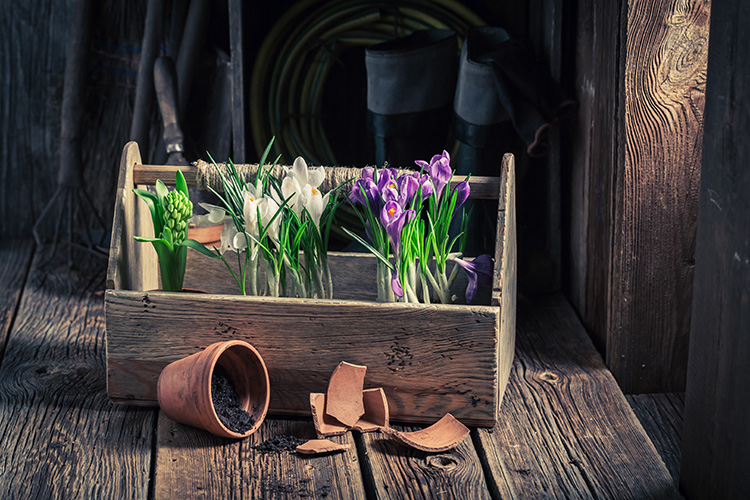
Gardening often gets a bad reputation as an activity reserved for people over a certain age; however, gardening is an excellent hobby regardless of age and can even provide physical and mental health benefits. As well as keeping your mind and body healthy, gardening also keeps your bank account in good shape by allowing you to produce your own fresh produce.
Since more and more consumers would rather pay more for organic, locally sourced food, it has often disappeared off the supermarket shelves long before others have had the chance to get their hands on it. Or it’s priced too high for everybody to afford it comfortably! To combat this, many UK homeowners have donned their gardening gloves and started growing their own food from the comfort of their back gardens.
Yet, if you’ve always wanted to hop on this trend but have never grown anything, you might wonder how to start. Therefore, we’ve created this article outlining several tips to help you get started, from investing in a potting shed greenhouse for setting plants off to protecting your fruits and veggies from the elements and creepy crawlies – keep reading to find out more.
Invest In A Potting Shed
A potting shed is one of the best investments for your garden since it’s versatile. Whether you use it as a workshop, storage, or serious gardening, potting sheds can do it all. A potting shed or greenhouse can maximise your outdoor space since it can store gardening equipment to tend to plants and practise your favourite pastime.
Typically characterised by four wooden walls and a slanted side made of transparent Perspex/glass, potting sheds can help catch rays of sunlight on hot days, benefiting the plants or seedlings you’re growing.
Although greenhouses are more commonly used for sowing fruits and vegetable seeds, investing in a potting shed is still valuable as it can help you set off your seedlings in their most vulnerable state before transferring them to a greenhouse for optimal growing.
Consider looking at some potting sheds and other leisure buildings provided by 1st Choice Leisure Buildings and see how they could help improve your growing efforts. From potting sheds and summerhouses to garden offices and timber workshops, visit their website to find out more or contact them directly for specific inquiries.
Protect Your Seedlings From Creepy Crawlies
If you’re not already a parent, growing your fresh produce will fill you with a sort of motherly love, as you’ll be tending to them day in and day out and watching as they thrive off your affections. So, imagine your disappointment if you come to check on them one day only to find that an insect (or the unpredictable British weather!) has caused them to shrivel or gnawed a hole in them.
To prevent this from happening, it is essential that you put preventative measures in place to ensure the safety of your allotment. One of the best ways to protect your fruits and vegetables from insects and environmental factors is by covering them with a layer of polythene and mesh which will keep them insulted during colder weather and ward off insects and birds.
Learn What Type Of Soil You Have
One of the most crucial elements for growing tasty fruits and vegetables is the type of soil you use, as the type you have can primarily affect the kind of plants you can grow and how successful your efforts will be.
One of the best ways to figure out what type of soil you have is by taking a handful and giving it a squeeze, which should tell you if it leans more towards being a sand, clay, silt, peat, chalk, or loam-based soil. Figuring out the kind of soil you have before you start growing will enable you time to prepare the ground accordingly and eliminate any problems that may arise from not doing so.
For instance, root vegetables like potatoes and carrots will grow better on the ground in clay soil, whereas if you’d like to plant some berries, you’d be better off using a raised container filled with topsoil.
Understanding the type of soil you have in your garden is essential to save yourself wasted time, effort, and money planting fruits and vegetables that are not likely to grow as strongly as they should if they were in the appropriate soil. Not to mention it saves you the discouragement of seeing your project not fare as well as you wanted!
Experiment With The Types Of Food You Grow
One of the best things about growing your own produce is that you can choose to grow whatever you want, providing that you have the correct soil type and space! So, even if you’re not as skilled of a gardener as you’d like, don’t be afraid to experiment with the kinds of seedlings you grow.
From potatoes and carrots to strawberries and tomatoes, there is a variety of produce you can rear in the comfort of your back garden, so don’t be afraid to pick and mix. Even if they don’t turn out as well as you expected, it’s an excellent opportunity to learn from your mistakes and do better the second time!

Leave a Reply